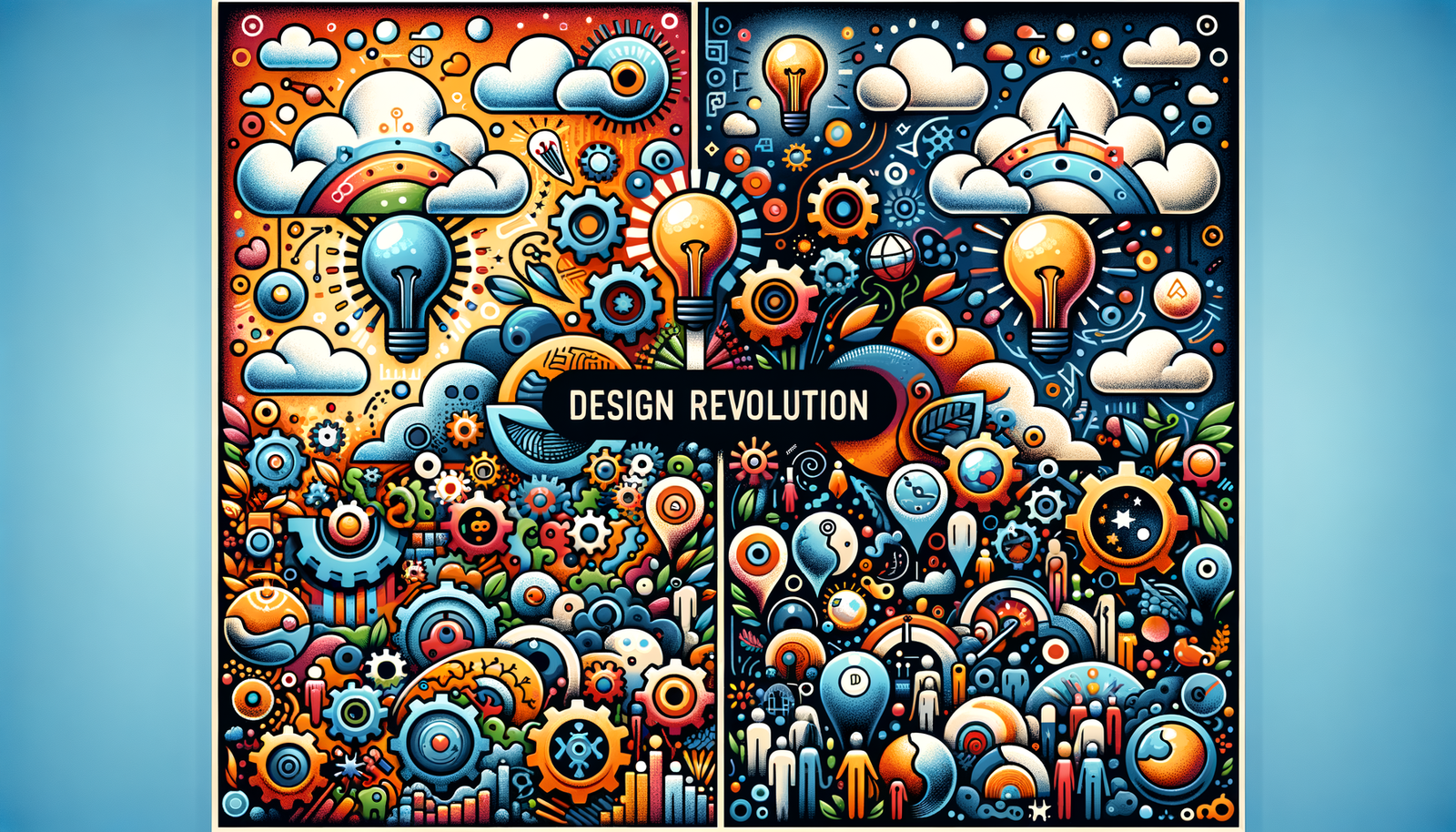Your Cart is Empty
Customer Testimonials
-
"Great customer service. The folks at Novedge were super helpful in navigating a somewhat complicated order including software upgrades and serial numbers in various stages of inactivity. They were friendly and helpful throughout the process.."
Ruben Ruckmark
"Quick & very helpful. We have been using Novedge for years and are very happy with their quick service when we need to make a purchase and excellent support resolving any issues."
Will Woodson
"Scott is the best. He reminds me about subscriptions dates, guides me in the correct direction for updates. He always responds promptly to me. He is literally the reason I continue to work with Novedge and will do so in the future."
Edward Mchugh
"Calvin Lok is “the man”. After my purchase of Sketchup 2021, he called me and provided step-by-step instructions to ease me through difficulties I was having with the setup of my new software."
Mike Borzage
Revolutionizing Design: The Impact of Cloud-Based Collaboration on Innovation and Efficiency
December 08, 2024 6 min read


Introduction
The advent of cloud technology has significantly transformed various industries, and the design sector is no exception. The integration of cloud-based systems in design processes has revolutionized how professionals collaborate, share, and develop ideas. With the rapid shift towards remote work environments, there is an increasing demand for tools that facilitate seamless collaboration regardless of geographical boundaries. The cloud offers a platform where designers can access resources, collaborate in real-time, and streamline workflows efficiently. This not only enhances productivity but also fosters innovation by bringing together diverse teams with varied expertise.
The Mechanics of Cloud-Based Collaboration
Understanding the mechanics behind cloud-based collaboration is essential for leveraging its full potential in the design industry. The cloud infrastructure forms the backbone of this collaborative environment, providing the necessary tools and resources for efficient design processes.
Cloud Infrastructure
At the core of cloud-based collaboration is a robust cloud infrastructure that supports various functionalities essential for design work. This infrastructure comprises cloud storage, which offers vast and scalable spaces for storing design files, assets, and documents securely. The computing power provided by the cloud enables designers to run complex simulations and renderings without the need for high-end local hardware. Scalability is another critical aspect, allowing resources to be scaled up or down based on the project requirements. This means that as a project grows in complexity, the cloud infrastructure can accommodate increased demand for storage and processing power seamlessly.
Moreover, the cloud infrastructure is designed to handle multiple users accessing and working on the same files simultaneously. This is facilitated through distributed servers and advanced networking technologies that ensure data is synchronized in real-time across all devices. Key components of cloud infrastructure that enable this include:
- High-speed data transfer protocols
- Redundant storage systems for data preservation
- Load balancing to distribute workloads efficiently
These elements work together to create a stable and efficient environment for collaborative design work, eliminating the limitations of traditional local systems.
Real-Time Collaboration
Real-time collaboration is one of the most significant advantages of cloud-based design platforms. It allows team members located in different parts of the world to work together on the same project simultaneously. This is achieved through shared workspaces where updates are reflected instantly, ensuring that everyone is working with the most recent version of a design. Tools that support this level of collaboration include live editing features, comment and annotation systems, and version control mechanisms.
Instant communication is facilitated through integrated messaging systems, video conferencing tools, and notifications that keep team members informed of changes and updates. Real-time collaboration enhances coordination among team members, reduces delays caused by time zone differences, and fosters a more dynamic and interactive working environment. This collaborative approach also encourages the exchange of ideas and feedback, leading to more innovative and refined design solutions.
Security and Data Management
In the realm of cloud-based collaboration, security and data management are paramount. Protecting intellectual property is critical, and cloud providers implement rigorous security measures to safeguard sensitive design data. These measures include data encryption both in transit and at rest, ensuring that information is protected from unauthorized access. Access controls are implemented to regulate who can view or edit certain files, often using multi-factor authentication and role-based permissions.
Efficient data management is also a key aspect, as design projects can generate large volumes of data. Cloud systems employ sophisticated data management strategies that include data compression, efficient file organization, and backup solutions to prevent data loss. Additionally, redundancy and disaster recovery protocols are in place to ensure that data remains secure and accessible even in the event of hardware failures or other disruptions.
Benefits of Cloud-Based Design Processes
Embracing cloud-based design processes brings numerous benefits that enhance efficiency, reduce costs, and foster innovation within design teams. These advantages make a compelling case for the adoption of cloud technologies in the design industry.
Accessibility and Flexibility
One of the most significant benefits is the increased accessibility and flexibility that cloud solutions provide. Designers can access files and tools from any location and on any device, be it a desktop, laptop, tablet, or smartphone. This level of accessibility ensures that work is not confined to a physical office space and allows for greater flexibility in working hours and environments. Team members can collaborate while traveling, from home offices, or from different countries, making it easier to integrate global talent into projects.
This flexibility also contributes to better work-life balance, as designers can tailor their working hours to fit their personal schedules without compromising productivity. It enables teams to respond quickly to project changes or client feedback, regardless of time zones or geographical barriers. The cloud's accessibility thus plays a crucial role in enhancing the overall efficiency and responsiveness of design processes.
Cost Efficiency
Cost efficiency is another significant advantage of cloud-based design solutions. Traditional design software often requires substantial investment in high-end hardware to handle resource-intensive applications and large file sizes. In contrast, cloud-based platforms offload much of the processing to remote servers, reducing the need for expensive local hardware. This shift translates into lower upfront costs for equipment and maintenance.
Moreover, many cloud services operate on a pay-as-you-go model, where organizations only pay for the resources they use. This model allows for better budget management and scalability, as companies can adjust their resource usage based on project demands without significant financial implications. Additional cost savings come from reduced expenditures on physical storage solutions and decreased downtime, as cloud services often guarantee high availability and reliability.
Enhanced Collaboration and Innovation
The cloud fosters an environment of enhanced collaboration and innovation by bringing together multidisciplinary teams in a shared virtual space. Designers, engineers, and other stakeholders can work concurrently on projects, contributing their unique perspectives and expertise. This collective approach accelerates problem-solving and leads to more innovative design solutions.
Shared environments in the cloud enable easy sharing of ideas, feedback, and updates, which enhances team cohesion and project alignment. Data analytics tools integrated into cloud platforms can provide insights into design performance, user engagement, and other critical metrics, informing better decision-making. By facilitating seamless collaboration and access to real-time data, the cloud empowers teams to push the boundaries of creativity and efficiency in their design work.
Challenges and Limitations
While the benefits are substantial, there are also challenges and limitations associated with adopting cloud-based design processes. Understanding these challenges is essential for organizations to navigate them effectively and leverage the full potential of cloud technologies.
Technical Challenges
One of the primary technical challenges is the dependence on a stable internet connection. Internet dependency means that any downtime or connectivity issues can significantly disrupt access to cloud-based tools and data. This reliance can pose risks in regions with unstable internet infrastructure or during network outages. Organizations must consider backup connectivity solutions or offline capabilities to mitigate this risk.
Additionally, there is often a learning curve associated with new cloud-based design software. Teams may require time and training to become proficient with new interfaces, features, and workflows. Compatibility issues may also arise when integrating cloud platforms with existing systems or collaborating with partners using different software solutions. Addressing these technical challenges requires careful planning, investment in training, and possibly upgrading network infrastructure to ensure smooth adoption.
User Adoption and Change Management
The human aspect of transitioning to cloud-based solutions presents its own set of challenges. User resistance to change can hinder the adoption of new technologies. Designers accustomed to traditional tools may be reluctant to switch to cloud-based platforms due to comfort with existing systems or skepticism about the benefits. This resistance can be addressed through comprehensive training programs that demonstrate the advantages and functionalities of the new tools.
Effective change management strategies are crucial in facilitating this transition. Organizations should involve team members in the decision-making process, provide support during the transition period, and set clear expectations. Regular feedback mechanisms can help identify and address concerns promptly. By prioritizing user adoption and providing the necessary resources, organizations can ease the transition and encourage widespread acceptance of cloud-based design solutions.
Conclusion
The integration of cloud-based collaboration tools is transforming the design industry, offering unprecedented levels of accessibility, flexibility, and collaborative potential. By leveraging cloud technology, design teams can break down geographical barriers, reduce costs, and enhance innovation through real-time collaboration and data-driven insights. However, successful adoption requires a balanced approach that acknowledges and addresses the technical and human challenges involved.
Organizations must invest in robust infrastructure, provide training, and implement effective change management practices to navigate these challenges. As cloud technology continues to evolve, the potential for further advancements in design processes is significant. Embracing these technologies positions organizations at the forefront of innovation, ready to capitalize on emerging opportunities in the dynamic landscape of the design industry.
Also in Design News

Rhino 3D Tip: Rhino Plug-in Maintenance and Safe Update Workflow
December 16, 2025 2 min read
Read More
Cinema 4D Tip: Tiered Cinema 4D Render Presets with Tokenized Outputs
December 16, 2025 2 min read
Read More
Revit Tip: Duct Routing Best Practices and Fabrication Workflow
December 16, 2025 2 min read
Read MoreSubscribe
Sign up to get the latest on sales, new releases and more …


